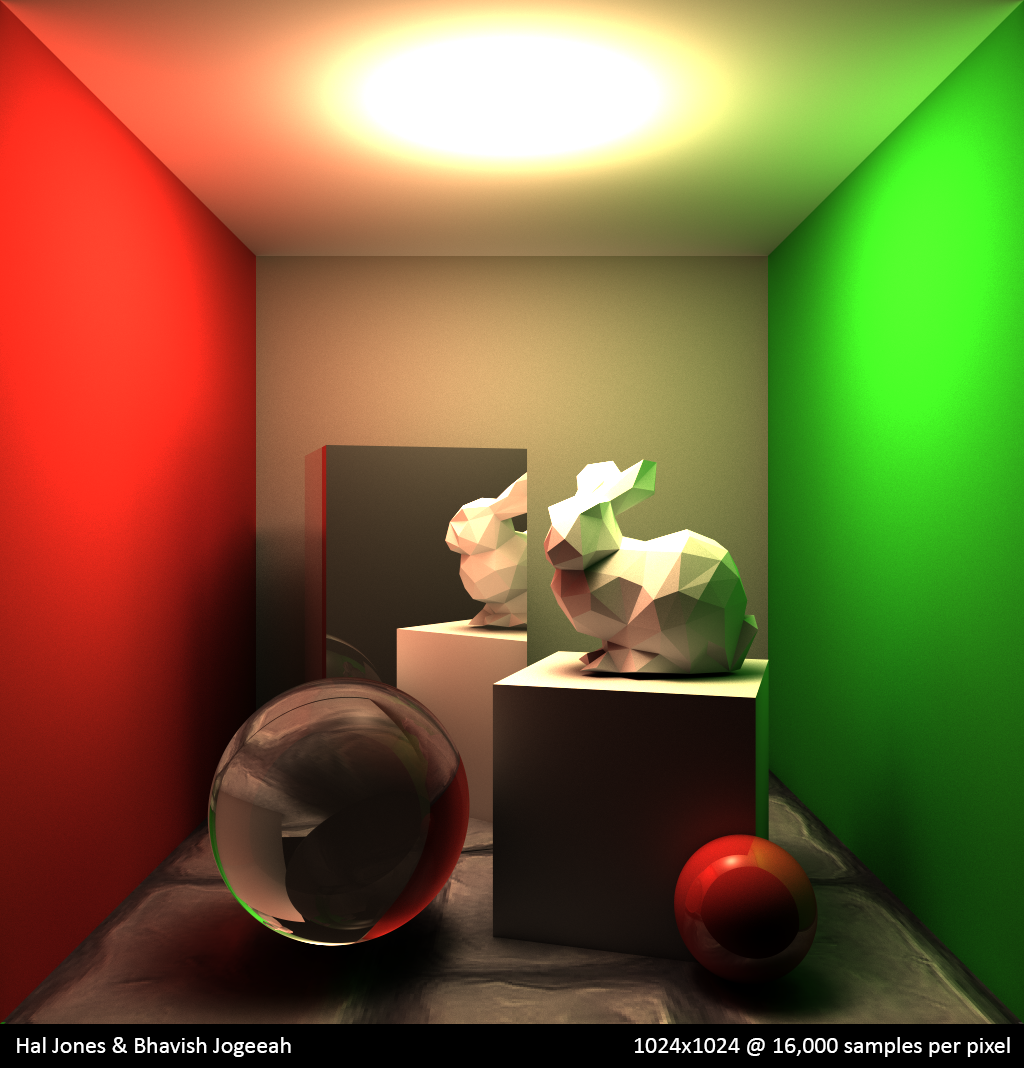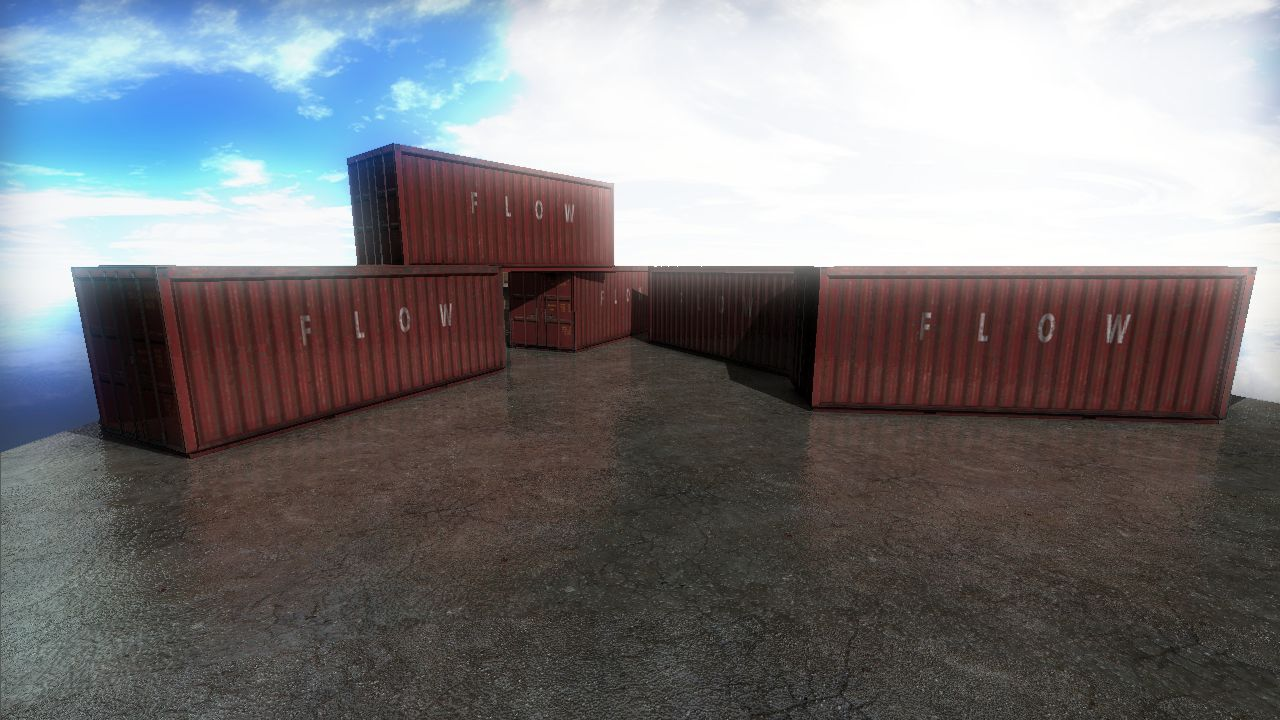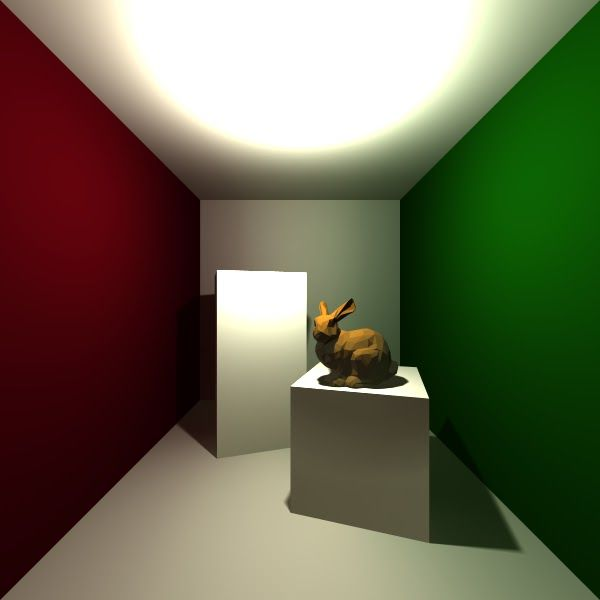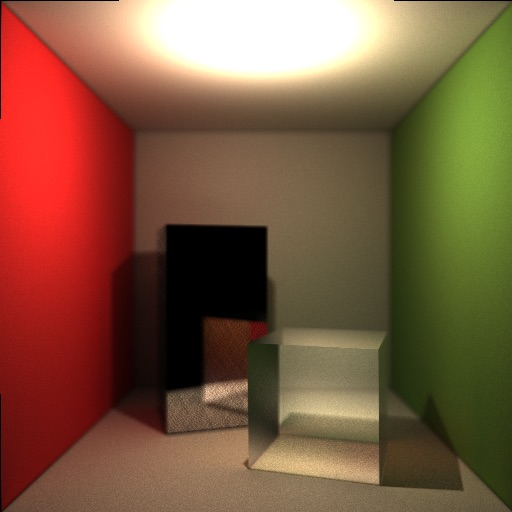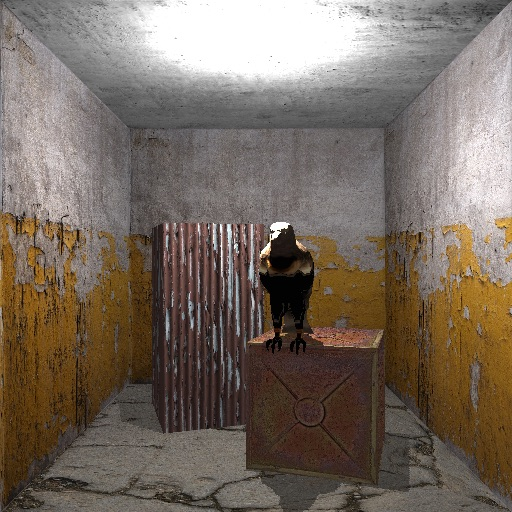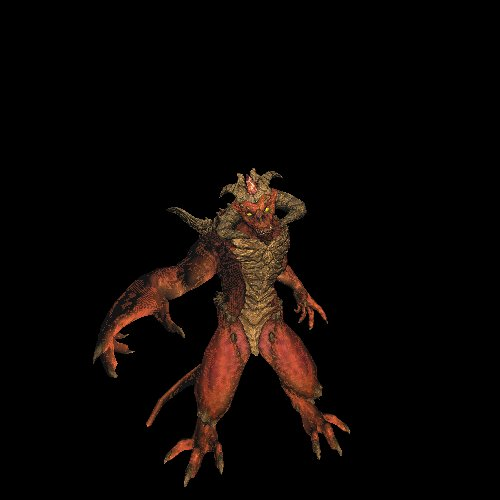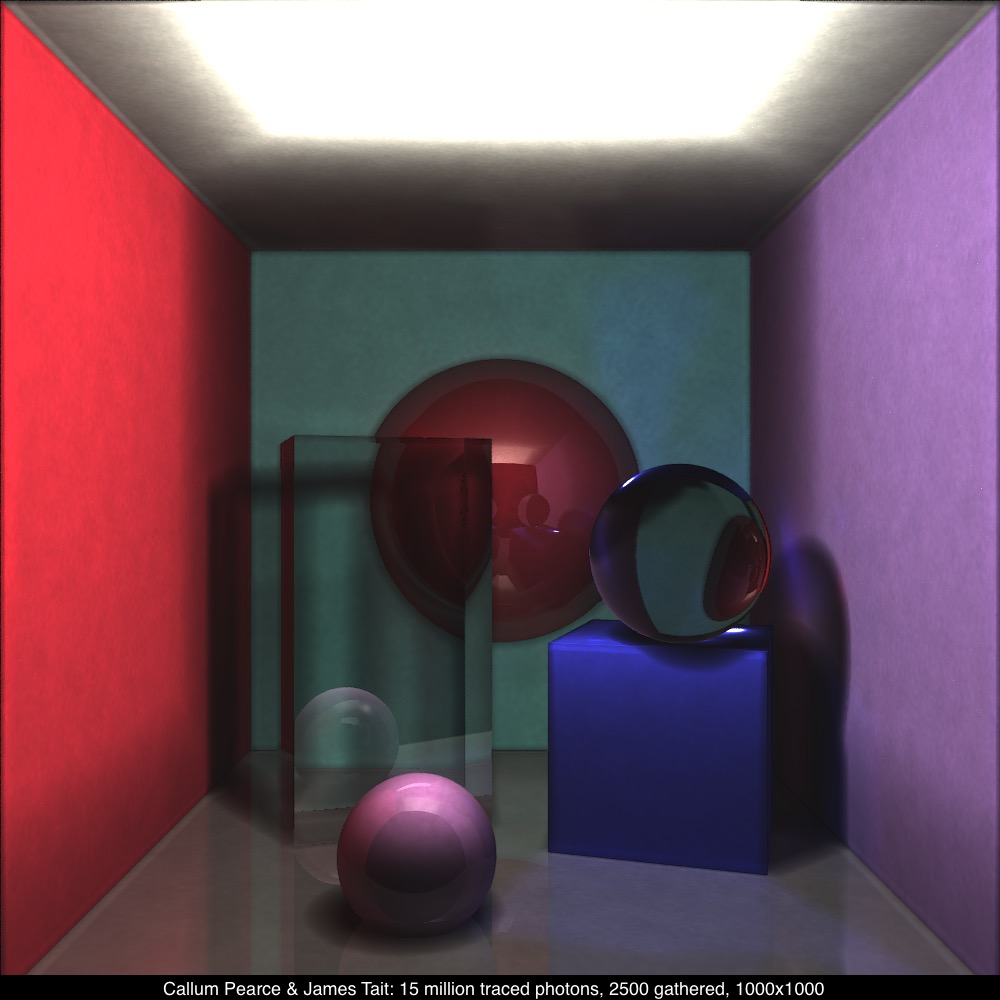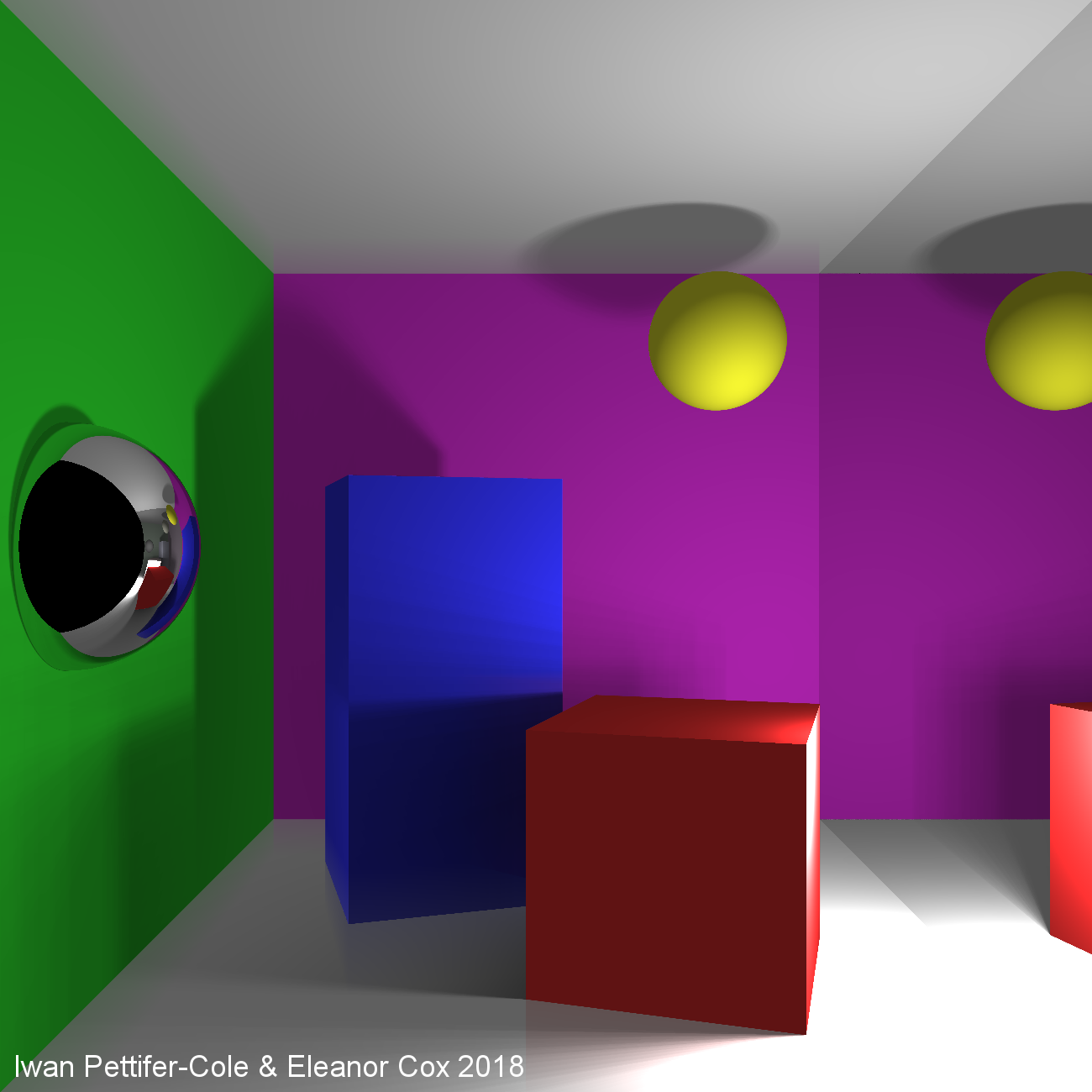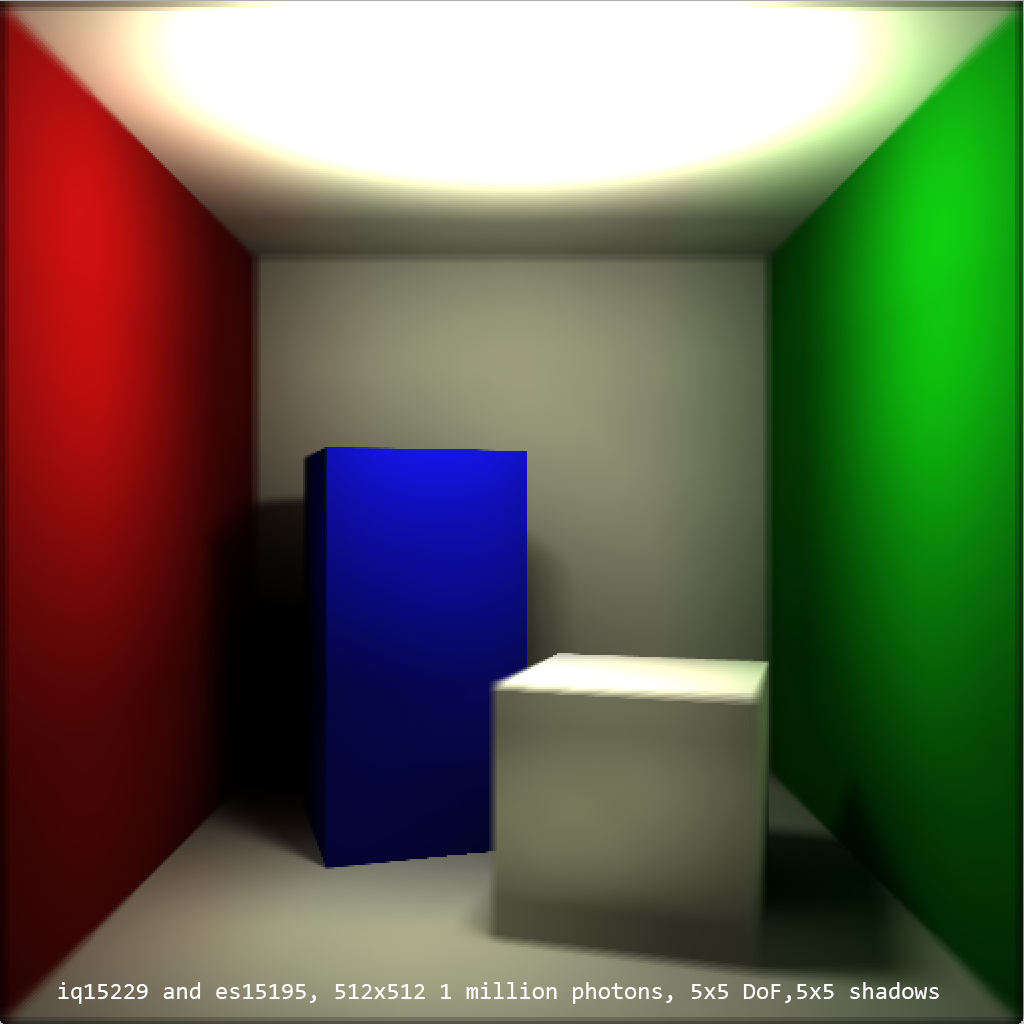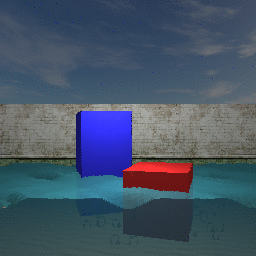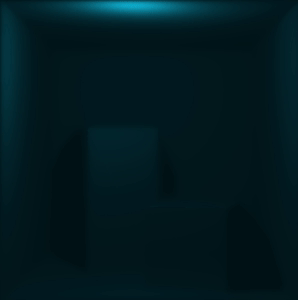The unit has been running in its current form at University of Bristol since 2016, during this time there has been some amazing work submitted. Below are some examples of what people have created. If you have done stuff for this unit and want me to put it up here, please contact me and I'll upload it.
Hal Jones & Bhavish Jogeeah
Michael Fitzpatric & Michael Parkin-White
This raytracer contains a lot of different techniques, the most important thing is the photon mapper and final gether which generates very stable results as can be seen below the glas dragon. Anti-Aliasing, Textures, Area Lights/Soft Shadows, Object Loader, Materials and scene management, Photon Mapping and Final Gather, Octree, Caustics, Image filters
Jamie Willis & Harry Mumford-Turner
This raytracer contains a lot of techniques. It uses photon mapping for global illumination, soft-shadows, anti-aliasing etc. To make it all run in a sensible time lots of optimisations have been implemented, it uses KD-Trees for the geometry. The colour bleeding and other effects are really subtle and makes for a very balanced image, really like this one. Jamie will be teaching on the unit this year so make sure that you have a chat with him about his work.
Iwan Pettifer-Cole & Eleanor Cox
This is a very interesting raytracer, clearly it has the looks but its not conventional, if you look at the shadows they have different levels, there is also colour bleeding but its as you can see from the noisefree rendering its not a path tracer, neither a photon mapper, its well a Cox and Pettifer-Cole renderer.
Eleni Stylianou & Ibrahim Qasim
Very well compositioned photon mapper including a lot of different things. What I really like with this rendering is how subtle all the effects are, often you see colour bleeding which is way to strong just to show off, here its subtle and it looks great. Also notice the effect of the depth of field it really adds to the interpretation of the image. Splendid work!
Codrin Popa & Michael Todd
As a lecturer I try to tell truths, its kinda the basis for education, that I somehow tell you things that are at least somewhat right. One of the truths in Computer Graphics that I told you, which motivated the two courseworks was that raytracing is NOT realtime. Well in ever class there are always these people who just never listen and simply ignore what you say, people like Codrin and Michael for example. So rather than trusting their lecturer and admitting that raytraycing is not realtime they just had to go and do it and prove me wrong. This work is absolutely amazing, what you are seeing is a path-tracer in real-time, and its not just a simple one either, it has quite a big depth, it has reflections, refractions, and it just looks absolutely stunning. This is a second example of when I feel guilty giving someone a 100% mark, this deserves quite a bit more.
Rachel Jeffries-Harris & Josh Cripps
Have a look at that, phew, yet again goosebumps! The aim of this unit is to understand graphics, to go out of your comfort zone and explore, leave the shackles of right and wrong behind and just create. What Rachel and Josh have done here empitomizes this, early in the unit they started talking about water, and then over months of research, testing, implementing, they delivered this. The water surface is computed over a grid and has a very realistic motion, the technique is actually the one behind the water in the film Titanic (the only good thing about the film). Well not stopping there the scene is rendered using a photon mapper creating the wonderful caustic patterns both on the floor but also, have a look at the ceiling. Marvelous work!
Paul Chirculescu & ?
How cool is this, the lighting the composition, the focus, its really nice. One of the reasons we loose realism is that rendered images often look too clean, the main culprit of this is that we do not model the camera particularly well. The reason is that the complexity goes up very very quickly. In this example we have a lovely example on how modelling focus in a camera adds to the visuals. Excellent work and not easy at all!
